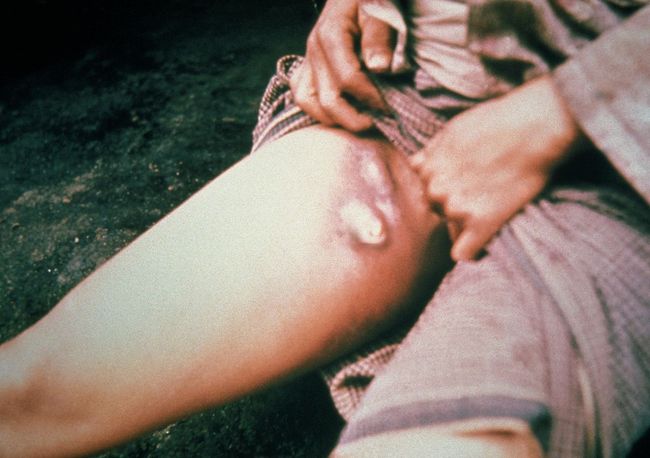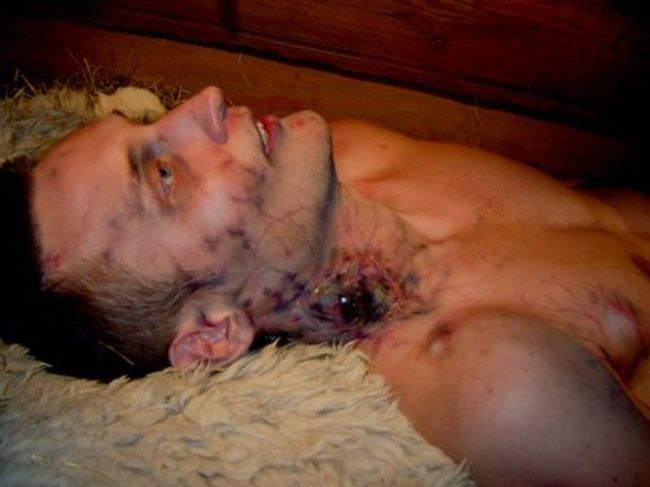- The history of past infections bubonic plague
- The video film Dark Ages Middle Ages: Black Death
- The causative agent of bubonic plague - the bacterium Yersinia Pestis
- Symptoms of bubonic plague
- Septicemic form and secondary septic
- Treatment of bubonic plague
- Plague has in our days
- on the video: 10 interesting facts about the plague, by Dameoz
Bubonic plague is a form of plague disease. Plague - an infectious disease, which is caused by the bacterium Yersinia Pestis. This bacterium lives in medium-sized animals and existing fleas on them. Infection occurs by Transmissible, ie. through a flea bite, and by direct contact and airborne droplets. Let us examine how the bubonic plague infection, How is the incubation period for plague infection and symptoms, antibiotic treatment and prevention of this dangerous disease today. Let's see how looks the plague pathogen - the bacterium Yersinia Pestis, under the microscope and fluorescent microscopy. And we start with the history of recent cases of infection with plague and its consequences for thousands of people.
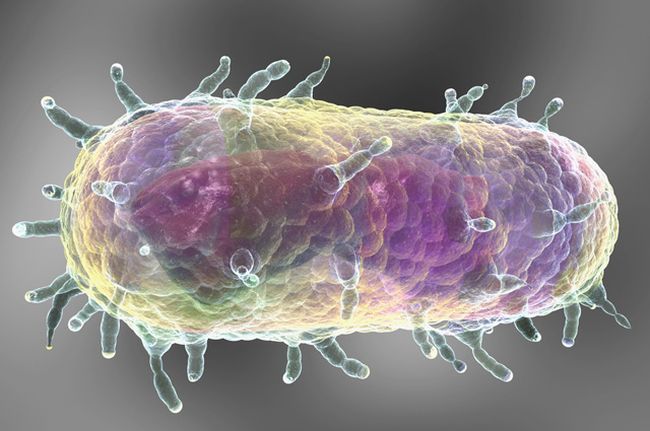
Important! Bubonic plague, characterized by the appearance of painful lymph nodes, affected by an inflammatory process, and it is the most common form of the disease.
The history of past infections bubonic plague
AT 16 century bubonic form of the plague spread throughout Europe and claimed the lives of a third of the population. Her rat steel carriers. To 19 Ages to treat the disease are not able to, therefore, the mortality rate was nearly 100% - some miraculously recovered independently.
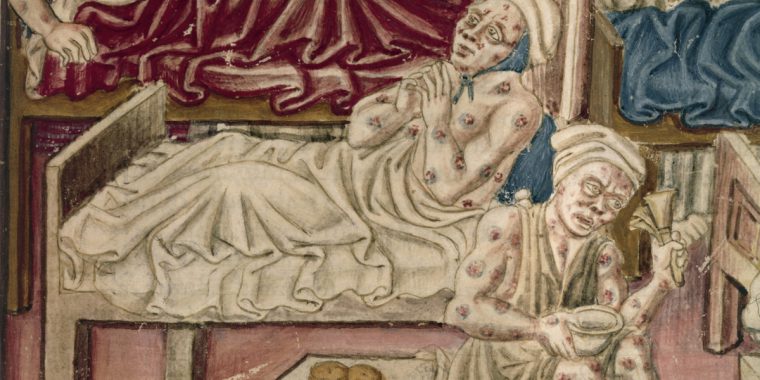
And cases of infection of bubonic plague are recorded to date, Most cases of infection observed in Central Asia, as well as in north China.
exciter, Yersinia Pestis bacteria, It was opened only in 1894 year, Consequently, at the same time, scientists were able to study the disease and develop a vaccine. But millions of people have died before this time. The best-known epidemic of bubonic plague has covered Europe 1346-1353 gg. presumably, it arose from the natural focus of the Gobi, and then spread to the territory of India, China, Europe, together with caravans.
The video film Dark Ages Middle Ages: Black Death
for 20 years of bubonic plague killed at least 60 million people. In the Middle Ages there was no escape from this disease - it tried to treat blood-letting, which further complicated the condition of patients, as they lost their last forces.
Outbreak of bubonic plague was repeated in 1361 and 1369 year. The disease has affected all spheres of life. History indicates, that after the bubonic plague came to the demographic situation of stability only through 400 years after the end of the disease.
There are several forms of the disease, depending on where it acquires flow specifics.
Important! Highly contagious forms are, at which the lung lesion, since they lead to the rapid spread of infection by droplets. When bubonic plague patients almost contagious.
The causative agent of bubonic plague - the bacterium Yersinia Pestis
Once in the body, the infection begins to develop rapidly, thus there may be resistance to drugs used, for the treatment of bubonic plague, Yersinia Pestis bacteria.
The life span of the bacteria in the sputum is about 10 day. even longer (few weeks) it may persist on clothing, in excreta of plague, and the corpses of the dead from the disease of people - up to several months. freezing processes, Lower temperatures do not destroy the causative agent of plague.
Important! Threatening bacteria of bubonic plague, is sunlight and high temperatures. Within an hour, the bacteria are killed plague Yersinia Pestis, at a temperature 60 degrees, when raised to 100 - it stands just a few minutes.
The incubation period after infection, bubonic plague is short enough - 1-3 day, while some people it may be only a few hours because of a weakened immune system. The aim of the pathogen is the human lymphatic system. Penetrating into the lymph, infection instantly spread throughout the body. Lymph nodes at the same time cease to work, they begin the accumulation of pathogenic bacteria.
Allocate skin and bubonic plague. If the skin in the form of the bite occurs quickly ulcerated papule. After that there is a scab and scar. Then usually begin to show signs of a more serious disease.
Bubonic form begins to increase in the next to the site of the bite lymph nodes.
In Wikipedia Specified, that may be affected lymph nodes of any region. In this case, most often affects the lymph nodes groin, less often - axillary.
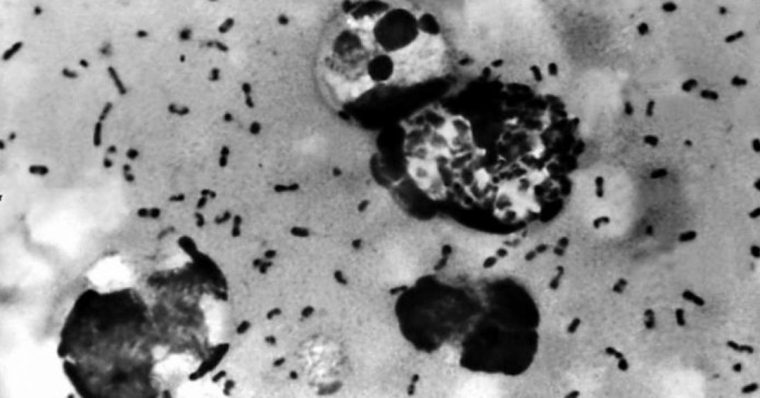
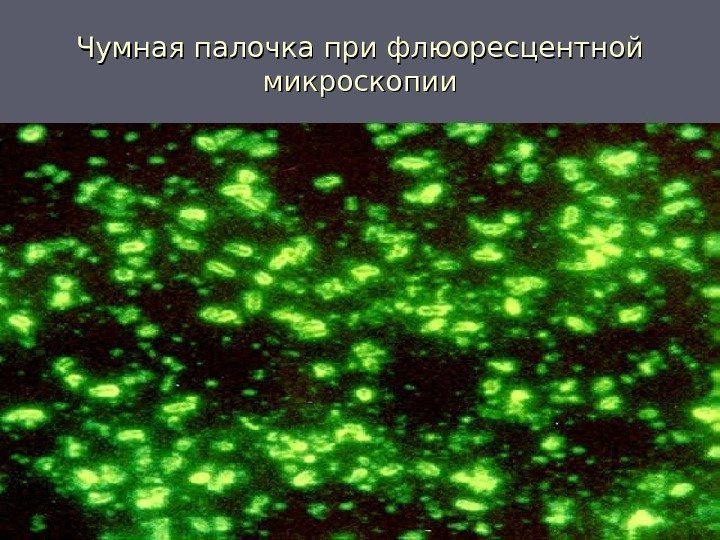
Symptoms of bubonic plague
Symptomatology in the initial stage of infection by the bacterium Yersinia Pestis plague, It is not specific and their manifestation resembles the common cold. The patient has the following changes are observed:
- on the site of the bite occurs extensive swelling red, resembling in appearance mean allergic reaction;
- spot emerged gradually transformed into a papule, full of blood and purulent contents;
- autopsy papules leads to this place ulcers, which for a long time does not heal.
At the same time, the bubonic plague has other symptoms, such as:
- temperature rise;
- characteristic signs of intoxication: nausea, vomiting, diarrhea, etc.;
- swollen lymph nodes in size (first few, then the disease affects the rest);
- headaches, like the manifestation of meningitis.
After a couple of days, lymph nodes greatly increase in size, cease to function, lose their mobility, when you touch them having pain.
later 4-5 lymph nodes days become soft, fill with fluid. If you touch it you can feel the vibrations. On 10 day units are opened and form a non-healing fistula.
The photo on the right, We see all these manifestations, click on the photo, for increase.
Bubonic plague often occurs in conjunction with meningitis. The patient has severe headaches, cramps throughout the body.
Bubonic form is not accompanied by the development of the local reaction to the bite, Unlike skin-bubonic plague. In the second microbe penetrates the skin, then lymph enters the lymph nodes.
Septicemic form and secondary septic
The penetration of the pathogen in the blood is accompanied by the appearance of generalized forms of the disease. Allocate septicemic form and secondary septicemic form.
Septicemic form of bubonic plague develops in cases, when the infection enters the bloodstream, without affecting the lymph nodes. Signs of intoxication are observed almost immediately. As the infection spreads quickly throughout the body, there is a set of foci of inflammation throughout the body. Developing disseminated intravascular coagulation, accompanied by the defeat of all organs. Bubonic plague patient dies due to an infectious-toxic shock.
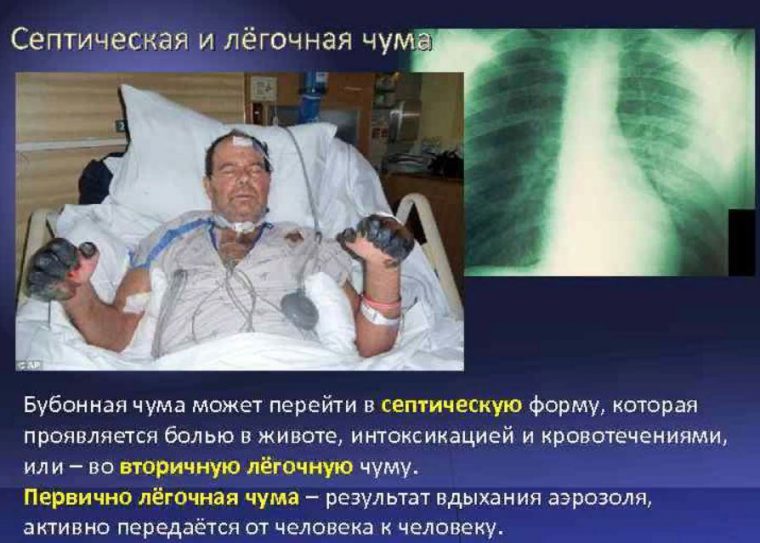
Secondary septic form of plague accompanied by the development of sepsis infection.
complications. Bubonic plague can be complicated by pneumonia. In such cases, it goes into the pulmonary form.
Pneumonic form of plague bubonic manifested by fever, severe headaches, pneumonia, chest pain, cough and expectoration of blood. Infection occurs by droplets, but it may develop as a secondary form of bubonic or septicemic. The disease is spreading rapidly throughout the body, However, it may be enough to cope modern antibiotics. Unfortunately, even intensive treatment can not be guaranteed exclusion of death.
When septic form of plague signs of disease are fever, chills, stomach ache, internal bleeding. There is a massive necrosis, often dying tissue on extremities fingers. Buboes in this form are not formed, but almost immediately lead to abnormalities of the nervous system. Untreated - practically guaranteed lethal, but if adequate therapy is also high probability of recovery.
Treatment of bubonic plague
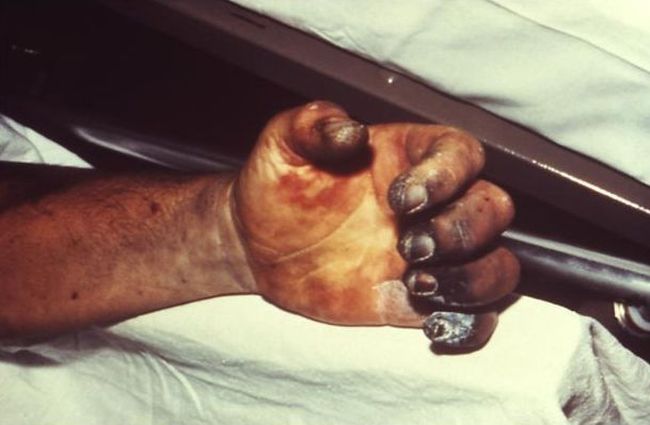
In the Middle Ages are no effective treatments for doctors, during the bubonic plague, could not offer. First of all, this was due to almost not develop medicine, as the main place occupied by religion, and the science is not supported. Secondly, most doctors simply afraid of contact with infected, to perish by.
However, undertaken attempts to treat plague, although it did not give any results. for example, buboes were opened and burned. Since plague was regarded as the poisoning of the whole organism, that there were attempts to use the antidote. Was applied to the affected area frogs, and lizards. of course, such methods could not help.
Cities enslaved panic. An interesting example of, How did you manage to keep some disease, are administrative measures, taken in Venice. There's a special sanitary commission was established. All ships, which sailed, subjected to special examination and identification of dead bodies or infected, burned. Goods and travelers were quarantined, lasted 40 days. Corpses immediately collected and buried in a separate lagoon at a depth of not less than 1,5 m.
Plague has in our days
should not think, that the disease is left only in the history books. Bubonic plague in the Altai region was recorded in the past (2016) year, but in general there are nearly 3000 cases of infection per year. Before the epidemic did not happen in the Altai Territory, however, all measures have been taken to eliminate the spread of infection, and in contact with the infected people were quarantined.
The main and modern method of treatment of bubonic plague in our time - the use of antibiotics. Drugs are administered intramuscularly, as well as themselves buboes. Usually, used to treat tetracycline and streptomycin.
Important! Patients with bubonic plague, infected by the bacterium Yersinia Pestis, subject to mandatory hospitalization, at the same time they are placed in special compartments. All personal effects, clothes to be disinfected. Contact with plague-infected patient, It assumes that the medical staff of security measures - be sure to use protective suits.
Necessarily carried manifestations symptomatic treatment of plague, bubo manifestations of the human body, the purpose of which is to facilitate the patient's condition and the elimination of complications.
To confirm recovery, bakposev conducted on the bacterium Yersinia Pestis, and repeat analysis 3 fold. And even after that, the patient still during the month is in the hospital. After discharge him for 3 months should monitor infectious diseases.
on the video: 10 interesting facts about the plague, by Dameoz
The video transmission of live healthy, He tells about bubonic plague, infection of the plague bacterium Yersinia Pestis bacteria and treatment:



